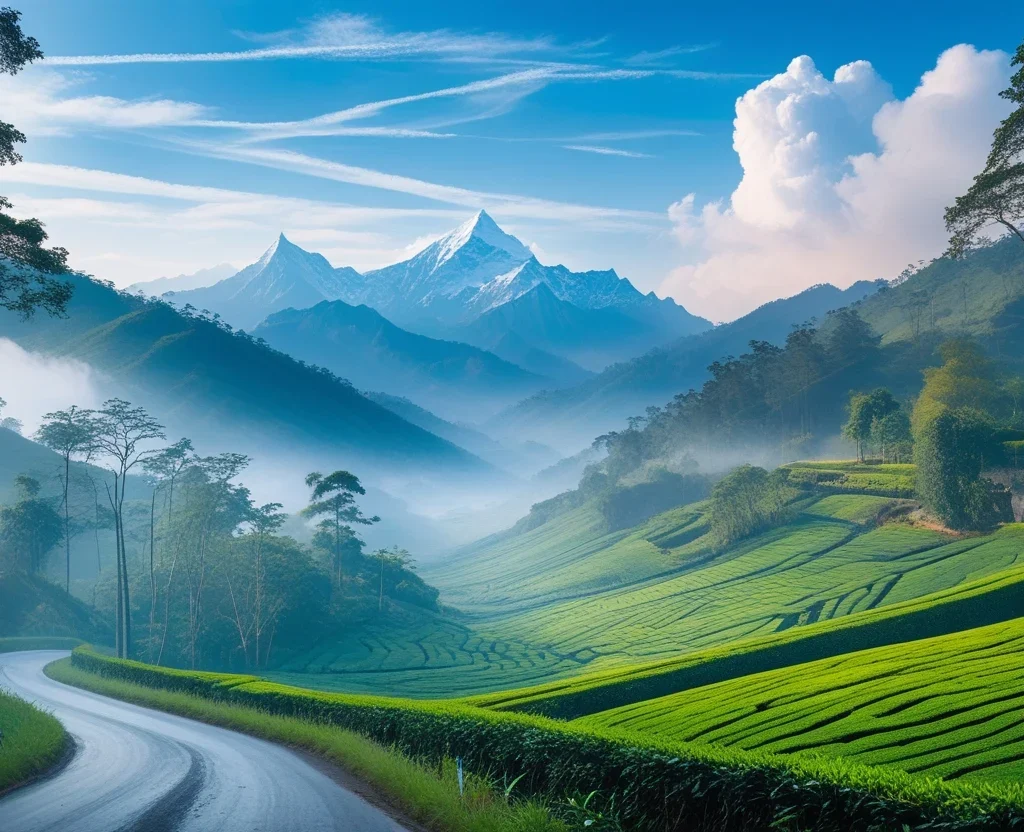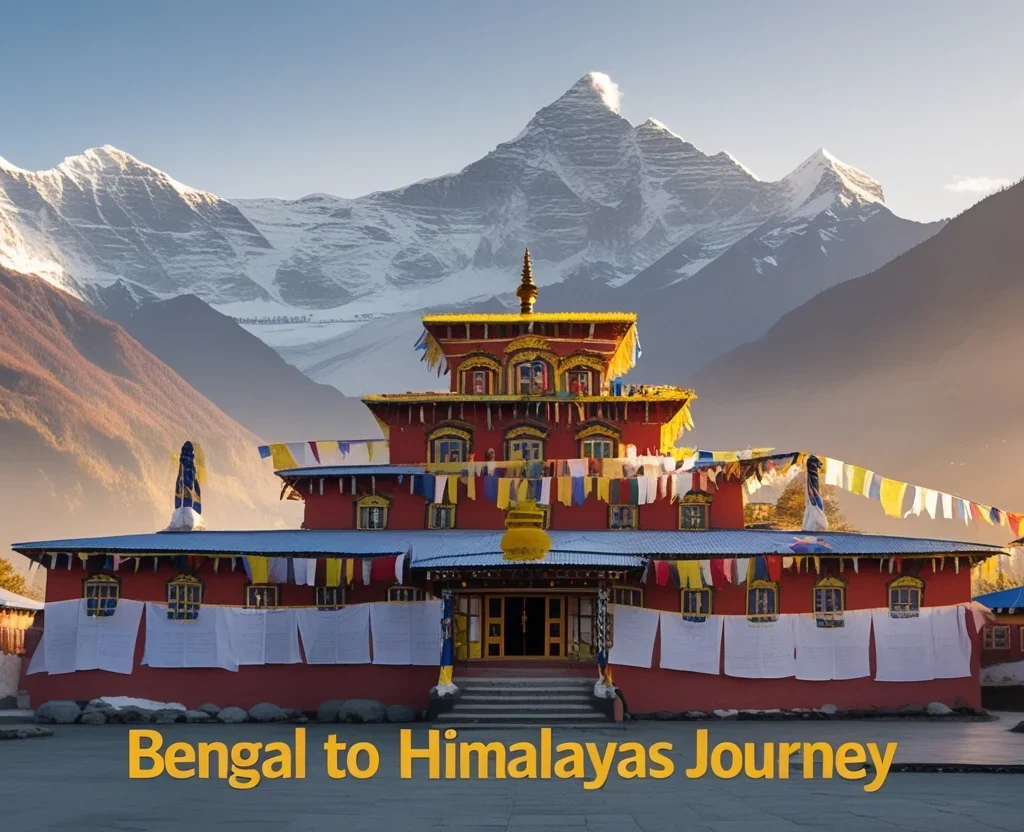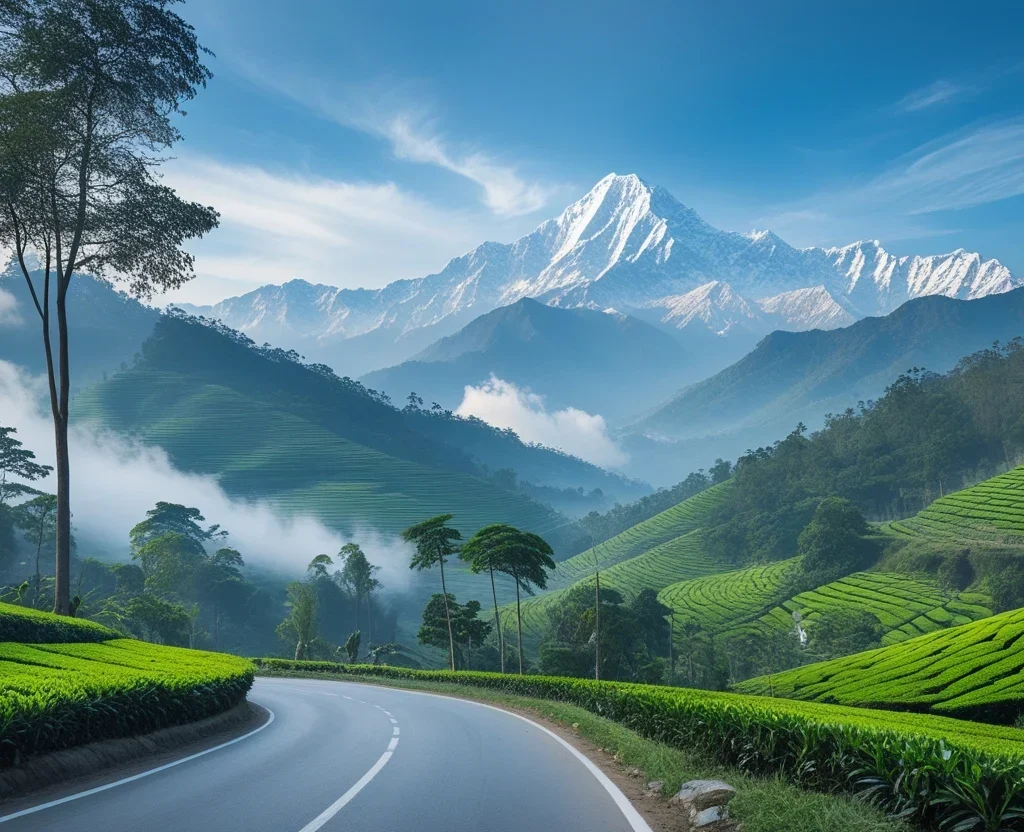Let’s share that the Bengal to the Himalayas Journey offers an unparalleled experience, blending rich cultural heritage with breathtaking natural beauty. This guide provides an in-depth look at planning and executing this journey, covering essential aspects such as transportation, accommodation, activities, and local insights.
Understanding the Bengal to Himalayas Journey
The journey from Bengal to the Himalayas typically begins in Kolkata, the capital of West Bengal, and traverses through diverse landscapes before reaching the majestic Himalayan ranges. This route offers travelers a unique opportunity to experience the transition from the plains to the mountains, each stage bringing its own set of attractions and challenges.
Best Time to Travel
The optimal time for this journey is between October and March, when the weather is clear and the roads are accessible. During this period, travelers can enjoy pleasant temperatures and minimal rainfall, ensuring a comfortable and safe journey.

Transportation Options
Travelers have several options to reach the Himalayas from Bengal:
- By Road: A road trip offers flexibility and the chance to explore various towns and villages along the way. The journey from Kolkata to Darjeeling, for instance, spans approximately 636 km and takes about 12-14 hours via NH 12.
- By Train: The Darjeeling Himalayan Railway, also known as the ‘Toy Train’, provides a nostalgic and scenic route from New Jalpaiguri to Darjeeling.
- By Air: Bagdogra Airport serves as the nearest airport to the northern Bengal region, with flights connecting to major cities.
Top Destinations Along the Route

- Siliguri: Often considered the gateway to the Himalayas, Siliguri offers access to both Darjeeling and Sikkim.
- Darjeeling: Known for its tea gardens and panoramic views of Mount Kanchenjunga, Darjeeling is a must-visit destination.
- Kurseong: A serene hill station offering a quieter alternative to Darjeeling, with beautiful landscapes and colonial architecture.
- Sikkim: A state rich in natural beauty and Buddhist culture, Sikkim boasts attractions like Tsomgo Lake, Rumtek Monastery, and the capital city, Gangtok.
- Kaluk: A lesser-known gem in West Sikkim, Kaluk offers stunning views of the Kanchenjunga range and a peaceful environment.
Accommodation Recommendations
- Darjeeling: Options range from heritage hotels like Glenburn Tea Estate to budget-friendly guesthouses.
- Kurseong: Consider staying at local homestays or boutique hotels for an authentic experience.
- Sikkim: Kaluk offers resorts like Ghonday Village Resort, which provides panoramic views of the mountains.
Activities and Experiences
- Trekking: The Sandakphu-Phalut trek is a popular route, offering views of four of the world’s five highest peaks.
- Cultural Tours: Explore monasteries in Sikkim and Darjeeling to learn about the region’s Buddhist heritage.
- Tea Estate Visits: Darjeeling’s tea gardens offer guided tours where visitors can learn about tea production.
Cultural Insights
The region is home to diverse communities, including Bengalis, Nepalis, Lepchas, and Bhutias. Understanding and respecting local customs and traditions will enrich your travel experience.

Travel Tips
- Permits: Some areas in Sikkim require permits for entry; ensure you have the necessary documentation.
- Health Precautions: Carry essential medications and consult a doctor before embarking on high-altitude treks.
- Local Cuisine: Don’t miss out on local dishes like momos, thukpa, and traditional Nepali thali.
Conclusion
The Bengal to Himalayas journey is a tapestry of diverse landscapes, cultures, and experiences. Whether you’re seeking adventure, tranquillity, or cultural immersion, this journey promises to be a memorable adventure. Plan ahead, respect local customs, and immerse yourself in the beauty and heritage of this unique region.
FAQs
1. What is the best route from Bengal to the Himalayas?
The most popular route is from Kolkata → Siliguri → Darjeeling → Sikkim (Gangtok, Pelling, etc.). You can travel by road, train, or fly to Bagdogra and continue by car.
2. How long does it take to travel from Kolkata to Darjeeling or Sikkim?
By road, Kolkata to Darjeeling takes about 12-14 hours. To Sikkim (Gangtok), it can take up to 16-18 hours depending on weather and road conditions. A flight to Bagdogra can reduce your travel time significantly.
3. What are the must-visit destinations on a Bengal to the Himalayas trip?
Key stops include Siliguri, Darjeeling, Kurseong, Kalimpong, and various parts of Sikkim like Gangtok, Pelling, and Yumthang Valley.
4. When is the best time to plan a trip from Bengal to the Himalayas?
The ideal time is October to March, offering clear skies, crisp air, and good visibility of the Himalayan peaks. Avoid the monsoon months (June to September) due to landslides and travel disruptions.
5. Do I need permits to visit Sikkim from Bengal?
Yes, Indian citizens require an Inner Line Permit (ILP) for certain parts of Sikkim. Foreign nationals need Restricted Area Permits (RAP). These are easily available online or at checkpoints.
6. What kind of accommodation is available on this journey?
You’ll find everything from budget guesthouses and backpackers’ hostels to luxury resorts and heritage tea estate bungalows—especially in Darjeeling and Sikkim.
7. What should I pack for the journey?
Layered clothing, warm jackets, hiking boots, sunscreen, sunglasses, essential medicines, and documents (ID, permits). Weather can shift quickly, so be prepared.
8. Are there trekking options along the Bengal to the Himalayas route?
Yes! Popular treks include Sandakphu-Phalut, Dzongri-Goechala, and Tinjurey Ridge in Sikkim. These offer incredible views of the Himalayan peaks.
9. Is the journey suitable for families or senior citizens?
Yes, but with planning. Choose comfortable transport and avoid high-altitude treks. Places like Darjeeling and Gangtok are senior-friendly with good facilities.
10. Is it safe to travel from Bengal to the Himalayas?
Generally yes. The region is well-traveled, especially by tourists. However, always check for weather updates, road conditions, and carry emergency contacts just in case.
Discover more from Traveler Swapnamay
Subscribe to get the latest posts sent to your email.





